Click on the above Structural Design – Official Account,Please
Industrial robots are widely used in manufacturing industries such as automotive, electronics, and food, capable of replacing repetitive machine operations. They are machines that rely on their own power and control capabilities to perform various functions. They can be commanded by humans or operate according to pre-arranged programs. Today, we will discuss the main components of industrial robots.
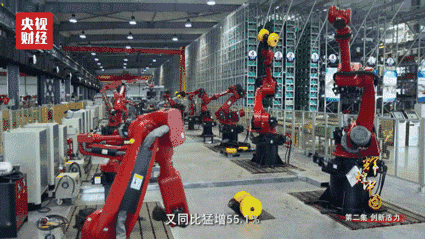
1. Main Body
The main mechanical body includes the base and actuators, consisting of multiple degrees of freedom mechanical systems including the upper arm, lower arm, wrist, and hand. Some robots also have walking mechanisms. Industrial robots typically have six degrees of freedom or even more, with the wrist generally having 1-3 degrees of freedom.
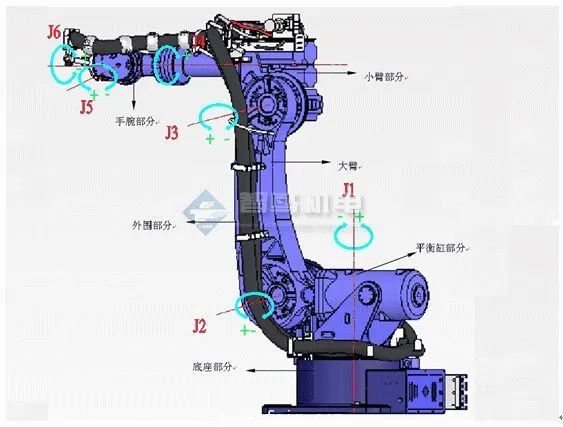
The drive system of industrial robots is classified into three main types based on the power source: hydraulic, pneumatic, and electric. Depending on the requirements, these three types can be combined into a composite drive system. Alternatively, they can be driven indirectly through mechanical transmission mechanisms such as synchronous belts, gear trains, and gears. The drive system consists of power devices and transmission mechanisms that generate corresponding movements in the actuators. Each of these three basic drive systems has its own characteristics, with electric drive systems being the mainstream today.
Due to low inertia, high torque AC and DC servo motors and their associated servo drivers (inverters, DC pulse width modulators) are widely adopted. This type of system does not require energy conversion, is easy to use, and offers sensitive control. Most motors require a precision transmission mechanism, such as a reducer. The gear acts as a speed converter, reducing the motor’s rotation speed to the desired level while achieving greater torque. When the load is high, simply increasing the power of the servo motor is not cost-effective; instead, increasing output torque through a reducer within an appropriate speed range is more efficient. Servo motors can easily overheat and exhibit low-frequency vibrations during low-frequency operations, making prolonged and repetitive work detrimental to their accuracy and reliability. The existence of precision gear reducers allows servo motors to operate at suitable speeds while enhancing the rigidity of the machine body and outputting greater torque. Currently, the mainstream reducers are of two types: harmonic reducers and RV reducers.
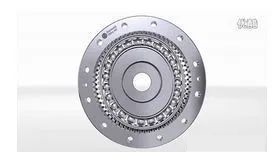
The robot control system is the brain of the robot, determining its functions and capabilities. The control system issues command signals to the drive system and actuators based on the input program and executes control. The main tasks of industrial robot control technology are to control the robot’s range of motion, posture, trajectory, and timing of actions in the workspace. It features easy programming, software menu operation, a user-friendly human-computer interaction interface, online operation prompts, and ease of use.
The controller system is the core of the robot, and foreign companies have conducted strict closed experiments in China. In recent years, with the development of microelectronics technology, microprocessors have become more powerful and cheaper, with 32-bit microprocessors already available on the market for 1-2 USD. The cost-effective microprocessors have brought new development opportunities for robot controllers, making it possible to develop low-cost, high-performance robot controllers. To ensure sufficient computing and storage capabilities, robot controllers now often use powerful chips from ARM series, DSP series, POWERPC series, Intel series, etc.
Existing general-purpose chips do not fully meet the requirements of some robotic systems in terms of price, functionality, integration, and interfaces, leading to the demand for SoC (System on Chip) technology in robotic systems, which integrates specific processors with necessary interfaces, simplifying the design of peripheral circuits, reducing system size, and lowering costs. For example, Actel has integrated the NEOS or ARM7 processor cores into its FPGA products, forming a complete SoC system. Research on robot technology controllers is mainly concentrated in the US and Japan, with mature products available from companies like DELTATAU in the US and PENGLI in Japan. Their motion controllers are based on DSP technology and utilize an open PC-based architecture.
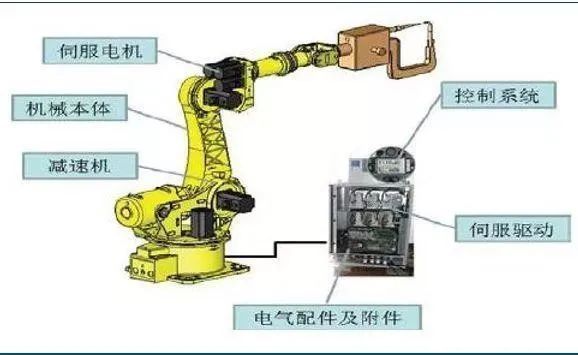
It consists of internal sensor modules and external sensor modules that acquire meaningful information about the internal and external environmental states.
Internal sensors are used to detect the robot’s own status (such as the angles between arms), mostly position and angle sensors. Specific types include: position sensors, angle sensors, etc.
External sensors are used to detect the robot’s environment (such as detecting objects and measuring distance to objects) and conditions (such as detecting whether a grasped object has slipped). Specific types include distance sensors, vision sensors, tactile sensors, etc.
The use of intelligent sensor systems improves the robot’s mobility, practicality, and intelligence standards. The human perception system is agile towards external world information; however, for certain specific information, sensors can be more effective than human systems.
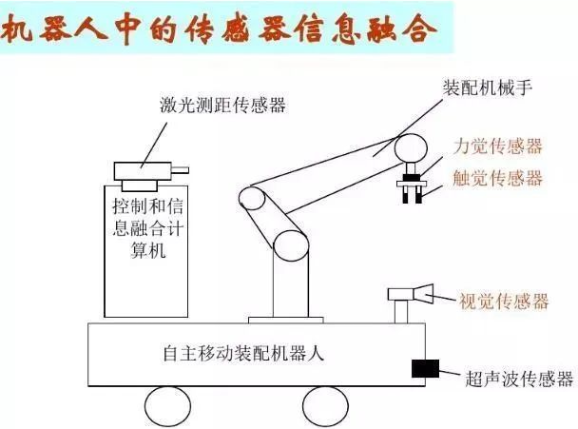
The end effector is the component connected to the last joint of the robotic arm, typically used to grasp objects, connect with other mechanisms, and perform required tasks. Generally, robots do not design or sell end effectors; in most cases, they only provide a simple gripper. Usually, the end effector is mounted on the flange of the robot’s six axes to accomplish tasks in a given environment, such as welding, painting, gluing, and loading/unloading parts.
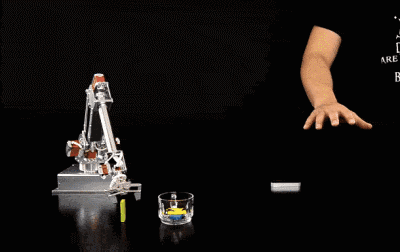
Servo drivers, also known as “servo controllers” or “servo amplifiers,” are used to control servo motors, functioning similarly to inverters for standard AC motors, and are part of the servo system. They generally control servo motors through three methods: position, speed, and torque, achieving high-precision transmission system positioning.
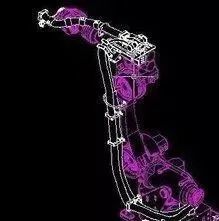
1. Classification of Servo Motors
Divided into two main categories: DC and AC servo motors. AC servo motors are further divided into asynchronous and synchronous servo motors, with AC systems gradually replacing DC systems. Compared to DC systems, AC servo motors have advantages such as high reliability, good heat dissipation, low inertia, and the ability to operate under high voltage. Because of the absence of brushes and commutators, AC servo systems are also known as brushless servo systems, using brushless structures such as squirrel-cage asynchronous motors and permanent magnet synchronous motors.
1) DC servo motors are divided into brushed and brushless motors.
① Brushed motors have low cost, simple structure, high starting torque, wide speed range, and easy control, but require maintenance (brush replacement) and generate electromagnetic interference, making them suitable for cost-sensitive general industrial and civilian applications.
② Brushless motors are small, lightweight, powerful, responsive, high-speed with low inertia, and stable torque with smooth rotation. They have complex control, are intelligent, and can use flexible electronic commutation methods, either square wave or sine wave commutation. These motors require no maintenance, are energy-efficient, have low electromagnetic radiation, and have a long lifespan, making them suitable for various environments.
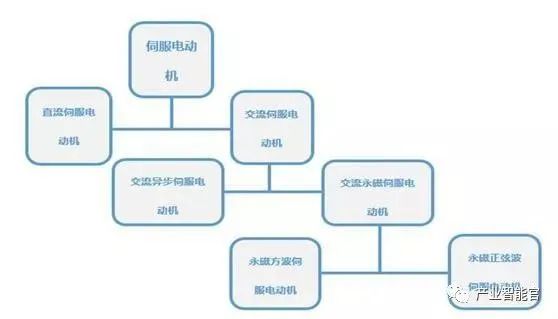
2. Characteristics of Different Types of Servo Motors
1) Advantages and disadvantages of DC servo motors.
Advantages: precise speed control, hard torque-speed characteristics, simple control principles, ease of use, and low price.
Disadvantages: brush commutation, speed limitations, additional resistance, and wear particles (not suitable for dust-sensitive or explosive environments).
2) Advantages and disadvantages of AC servo motors.
Advantages: good speed control characteristics, smooth control across the entire speed range with almost no oscillation, over 90% efficiency, low heating, high-speed control, high precision position control (depends on encoder accuracy), constant torque in rated operating areas, low inertia, low noise, no brush wear, and maintenance-free (suitable for dust-sensitive or explosive environments).
Disadvantages: more complex control, driver parameters need to be adjusted on-site to determine PID parameters, and require more wiring.
Currently, mainstream servo drivers use digital signal processors (DSP) as the control core, allowing for relatively complex control algorithms and achieving digitization, networking, and intelligence. Power devices commonly use intelligent power modules (IPM) as the core design for driver circuits, which integrate driving circuits and include protection circuits for overvoltage, overcurrent, overheating, and undervoltage faults. Soft start circuits are also included in the main circuit to reduce the impact on the driver during startup. The power drive unit first rectifies the input three-phase power or mains power through a three-phase full-bridge rectifier circuit to obtain the corresponding DC power. The rectified three-phase power or mains power is then frequency-converted by a three-phase sine PWM voltage inverter to drive three-phase permanent magnet synchronous AC servo motors. The entire process of the power drive unit can be simply described as an AC-DC-AC process. The main topology circuit of the rectifier unit (AC-DC) is a three-phase full-bridge uncontrolled rectifier circuit.
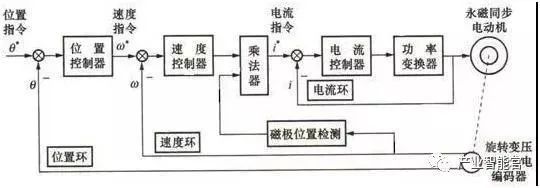
3. Wiring Diagram of Servo System
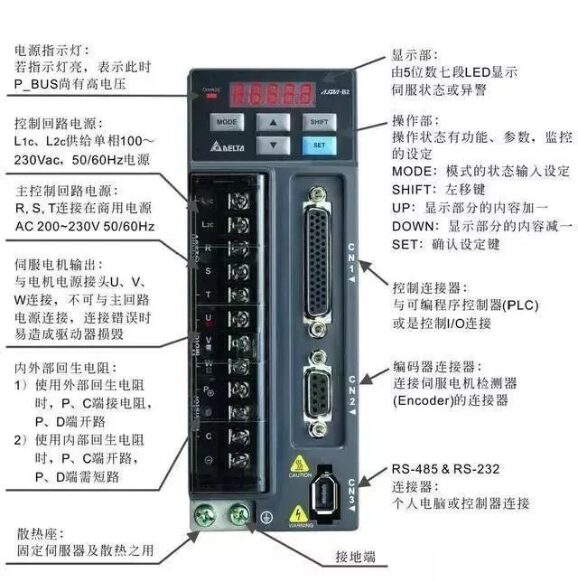
The servo driver mainly includes control loop power, main control loop power, servo output power, controller input CN1, encoder interface CN2, and connection port CN3. The control loop power is a single-phase AC power source, and the input power can be single-phase or three-phase, but it must be 220V. This means that when using three-phase input, our three-phase power must be transformed down to connect. For smaller power drivers, single-phase direct drive is possible; single-phase connections must connect to R and S terminals. The servo motor output U, V, W must never be connected to the main circuit power source, as this may burn out the driver. The CN1 port is mainly for connecting to the upper-level controller, providing input, output, encoder ABZ three-phase output, and various monitoring signal analog outputs.
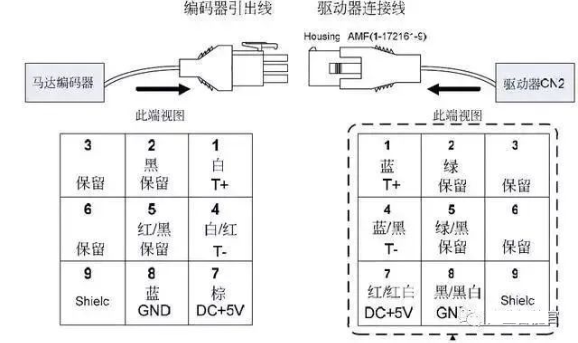
From the above diagram, we see that out of nine terminals, we only use five: one shielded wire, two power wires, and two serial communication signals (+-), which are similar to our ordinary encoder wiring.
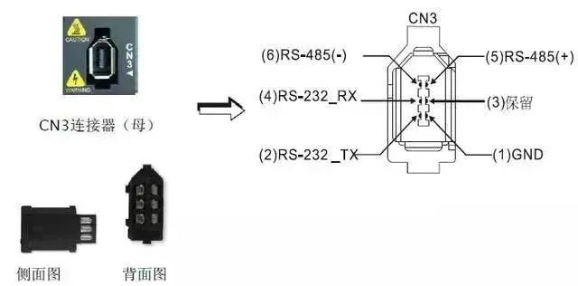
The driver connects to the upper-level computer PLC, HMI, etc. through the CN3 port, using MODBUS communication to control the driver, which can use RS232 or RS485 for communication.
Robots have very strict requirements for joint drive motors, and AC servo motors are widely used in industrial robots. Currently, the high-end domestic market is mainly occupied by foreign well-known enterprises, primarily from Japan and Europe and the United States, with significant room for domestic replacement in the future. Currently, foreign brands occupy nearly 80% of the Chinese AC servo market, mainly from Japan and Europe and the United States. Among them, Japanese products hold the largest market share of about 50%, with well-known brands including Panasonic, Mitsubishi Electric, Yaskawa, Sanyo, and Fuji. Their products are characterized by technology and performance levels that meet the needs of Chinese users, gaining stable and continuous customer sources with good cost performance and high reliability, especially having a monopoly advantage in the small and medium-sized OEM market.
Recently, I saw a piece of news: the robot industry must overcome the “bottleneck” problem, which resonated deeply with me. As labor costs rise, the replacement of humans with industrial robots has become a trend. Industrial robots are the cornerstone of intelligent manufacturing, but core components restrict the development of China’s robot industry. According to relevant surveys, domestic robot reducers mainly rely on imports. For the robot industry in China to thrive, we must resolutely solve the problem of core components.
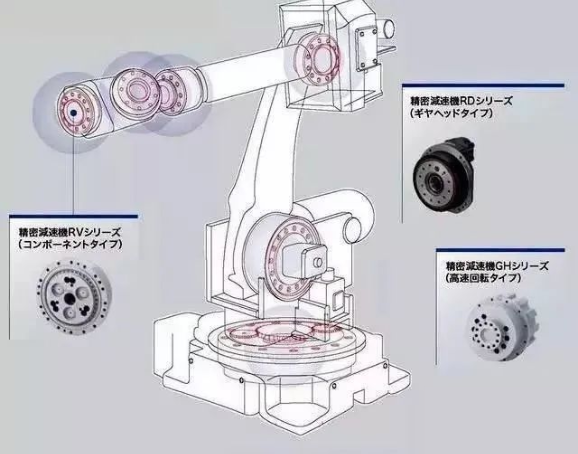
Next, let’s introduce the core precision component of industrial robots: reducers. Compared to general reducers, robot reducers are required to have characteristics such as short transmission chains, compact size, high power, lightweight, and ease of control. In the reducer industry, we must mention the two giants in this industry: Nabtesco (Teijin, also known as Nabotesco) and Harmonica Drive, commonly referred to as RV reducers and harmonic reducers. They almost monopolize the global market for robot reducers. Both types of reducers are manufactured with micron-level processing precision, which is already challenging in mass production phases regarding reliability, not to mention high-speed operation at thousands of revolutions and the need for long lifespans. The two main types of reducers currently used in industrial robots are RV reducers and harmonic reducers.
RV Reducers: They use low tooth difference engagement, but compared to harmonic reducers, RV reducers typically use cycloidal pin gears, consisting of cycloidal pin gears and planetary carriers. The key to RV reducers lies in the processing and assembly techniques. RV reducers have higher fatigue strength, rigidity, and lifespan, unlike harmonic drives, which significantly lose motion accuracy with increased usage time. Their disadvantage is that they are heavier and larger. RV reducers are used in high-torque joints of robot legs, waists, and elbows. Industrial robots often use RV reducers for the first, second, and third axes.
They have much higher fatigue strength, rigidity, and lifespan than the commonly used harmonic drives in robots, and their backlash precision remains stable, unlike harmonic drives that significantly lose motion accuracy with increased usage time. Therefore, many countries worldwide opt for RV reducers for high-precision robot transmissions, leading to a trend where RV reducers gradually replace harmonic reducers in advanced robot transmissions.
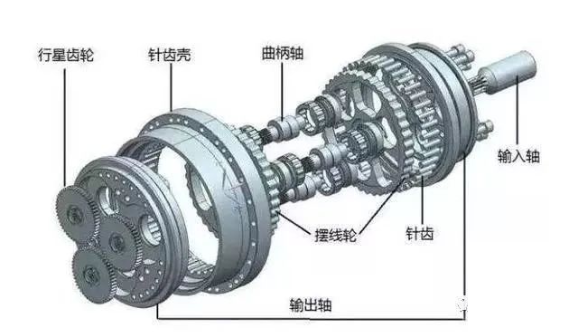
RV Reducer Disassembly Diagram
Harmonic Reducers: They also utilize low tooth difference engagement, with a key gear being flexible, requiring repeated high-speed deformation, making them relatively fragile with limited load-bearing capacity and lifespan.
Harmonic reducers are a type of harmonic drive device, which includes harmonic accelerators and harmonic reducers. A harmonic reducer mainly consists of a rigid wheel, a flexible wheel, and a radially deformable wave generator. It uses flexible gears to generate controllable elastic deformation waves, causing relative tooth misalignment between the rigid wheel and flexible wheel to transmit power and motion. This transmission differs fundamentally from ordinary gear transmissions in terms of engagement theory, assembly calculations, and structural design. Harmonic gear reducers have advantages such as high precision and high load capacity. Compared to ordinary reducers, they use 50% less material, reducing their size and weight by at least one-third. Therefore, harmonic reducers are mainly used in small robots, characterized by compact size, lightweight, high load capacity, and high motion precision, with a large single-stage transmission ratio. They are generally used in small-load industrial robots or the last few axes of large robots.
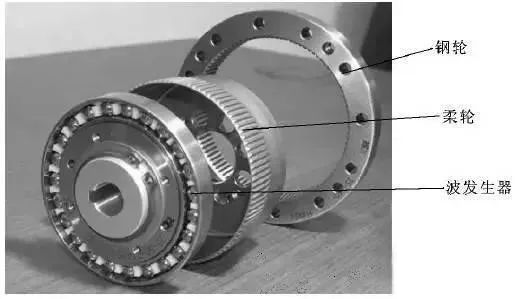
Harmonic Reducer Disassembly Diagram
Japan’s Nabtesco Company proposed the RV design in the early 1980s, and by 1986, substantial breakthroughs were made in RV reducer research, taking 6-7 years. Similarly, domestic companies such as Nantong Zhenkang and Hengfengtai took 6-8 years to achieve results. Does this mean that local Chinese enterprises have no opportunities? Fortunately, after several years of layout, Chinese companies have finally made some breakthroughs. Major domestic suppliers include Nantong Zhenkang, Qinchuan Machine Tool, Wuhan Jinghua, Zhejiang Hengfengtai, and Zhejiang Shuanghuan Drive. It is said that Nantong Zhenkang’s output has surpassed ten thousand units, and Qinchuan Machine Tool’s production line has been streamlined, with output gradually increasing. The Qinchuan Machine Tool project is a national import substitution project, with a total investment of 314 million yuan for the industrial robot joint reducer technology transformation project and production line.
The robot control system is the brain of the robot, determining its functions and capabilities. The control system issues command signals to the drive system and actuators based on the input program and executes control. The following article mainly introduces the robot control system.
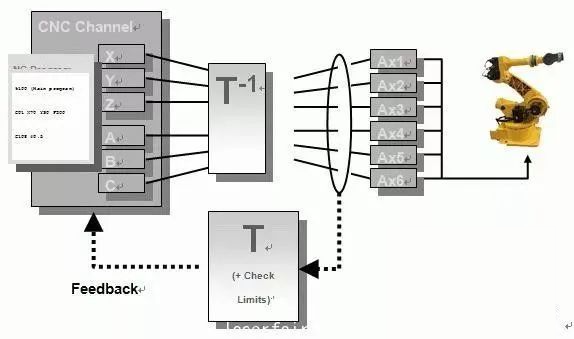
The purpose of “control” is to ensure that the controlled object behaves as expected. The basic condition for “control” is to understand the characteristics of the controlled object.
The essence is to control the output torque of the driver.
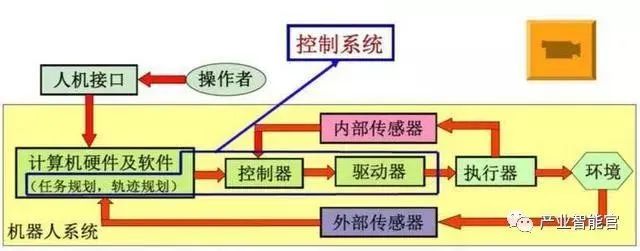
2. Basic Working Principle of Robots
The working principle is teaching and reproduction; teaching, also known as guided teaching, involves manually guiding the robot through the required action process step by step. The robot automatically memorizes the posture, position, process parameters, motion parameters, etc., of each action during the guidance process and automatically generates a continuous execution program. After teaching is completed, the robot only needs a start command to automatically perform all the processes according to the taught actions.
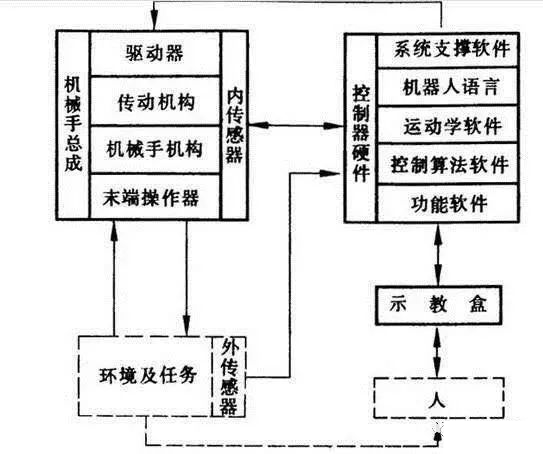
3. Classification of Robot Control
1) Divided into open-loop control and closed-loop control based on feedback.
Open-loop precise control conditions: knowing the model of the controlled object accurately and keeping this model unchanged during the control process.
2) Divided into force control, position control, and hybrid control based on expected control quantities.
Position control is divided into: single-joint position control (position feedback, position-speed feedback, position-speed-acceleration feedback), and multi-joint position control.
Multi-joint position control is divided into decomposed motion control and centralized control. Force control is divided into: direct force control, impedance control, and force-position hybrid control.
3) Intelligent control methods.
Fuzzy control, adaptive control, optimal control, neural network control, fuzzy neural network control, expert control.
4. Hardware Configuration and Structure of Control System. Electrical Hardware. Software Architecture.
Due to the involvement of numerous coordinate transformations and interpolation calculations, as well as lower-level real-time control in the robot’s control process, most robot control systems on the market currently adopt a layered structure using microcomputer control systems, typically employing a two-tier computer servo control system.

The main control computer receives the operational instructions input by the operator, first analyzes and interprets the instructions, and determines the motion parameters of the hand. It then performs kinematic, dynamic, and interpolation calculations to derive the coordinated motion parameters for each joint of the robot. These parameters are output to the servo control level via communication lines as the set signals for each joint’s servo control system. The servo drivers on the joints convert this signal from D/A and drive each joint to produce coordinated motion.
Sensors feedback the motion output signals of each joint back to the servo control level computer to form a local closed-loop control, achieving precise control of the robot’s motion in space.
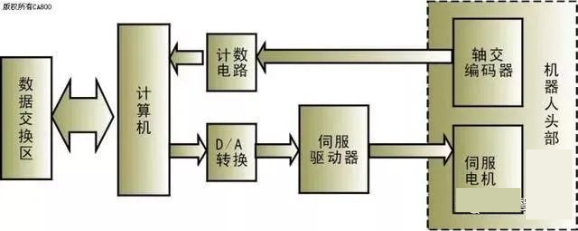
2) PLC-based motion control has two control methods:
① Using the output port of the PLC to produce pulse commands to drive the motor, while using general I/O or counting components to achieve closed-loop position control of the servo motor.
② Using an external position control module for the PLC to achieve closed-loop position control of the motor. This method primarily uses high-speed pulse control and is classified as a position control method, generally involving point-to-point position control.
Important Parameters of Robots
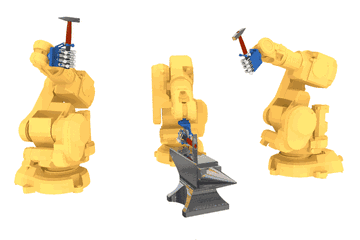
The technical parameters of robots reflect their capabilities and highest operational performance. They are crucial considerations in the design and application of robots. The main technical parameters include degrees of freedom, resolution, workspace, working speed, and working load.
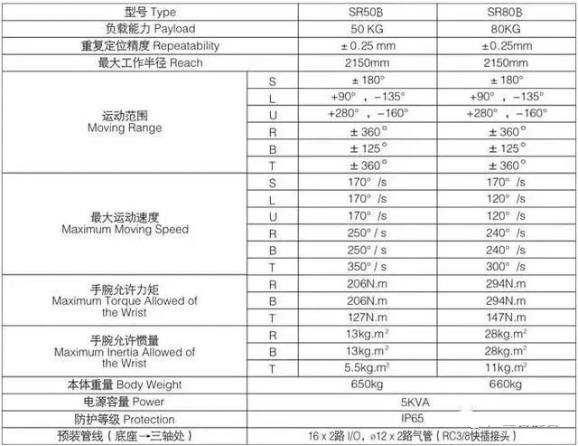
This refers to the number of independent coordinate axes the robot can move.
The degrees of freedom of a robot refer to the number of independent motion parameters required to determine the position and posture of the robot’s hand in space. The number of degrees of freedom typically equals the number of joints.
Common robots usually have 5 to 6 degrees of freedom. Some robots may also have external axes.
These are the moving pairs that allow relative motion between the various parts of the robot arm.
This refers to the entire spatial range that the robotic arm or hand can reach.
The shape of the workspace depends on the number of degrees of freedom and the types and configurations of the joints. The workspace of a robot can generally be represented through graphical or analytical methods.
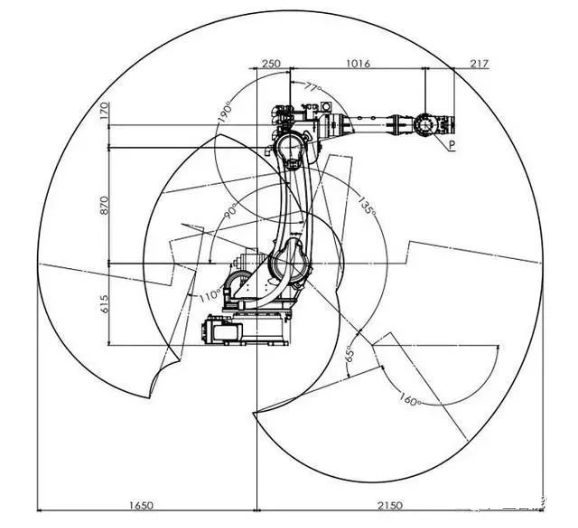
This refers to the distance moved or angle rotated by the center of the mechanical interface or tool center point in a unit time during uniform motion under load conditions.
This refers to the maximum weight that the robot’s wrist can bear at any position within its workspace. It is generally represented in terms of mass, torque, and moment of inertia.
It is also related to parameters such as running speed and acceleration. The working load is usually evaluated based on the weight of the workpiece the robot can grasp during high-speed operations.
For handling robots, the load weight must consider the combined weight of the gripper and the workpiece.
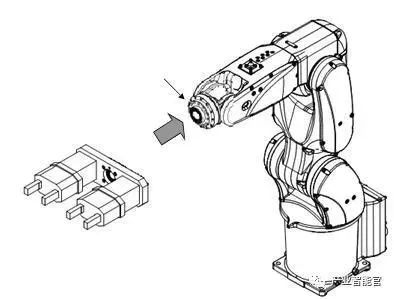

This refers to the smallest movement distance or the smallest rotation angle that the robot can achieve.
Repeatability or repeat positioning accuracy refers to the variability in reaching a specific target position. For example, if you require an axis to move 100 mm, but the first time it actually moves 100.01 mm and the second time it moves 99.99 mm, the difference of 0.02 mm is the repeat positioning accuracy. It measures the concentration of a series of error values, indicating the degree of repeatability. The accuracy of a robot is not only dependent on the joint reducer and transmission devices but is also significantly influenced by the mechanical assembly process. Many inaccuracies in repeat positioning stem from improper assembly.
Content Source: Network, Compiled and Edited by Industrial Robot Teaching,If there is any infringement, please contact us.

Structural Design – Official Account


Welcome to visit Steel Stair Home, GangLouTi.com, a helper for finding steel stair materials
 Welcome to visit Steel Structure Person website, GangGouRen.com, a great tool for searching engineering articles
Welcome to visit Steel Structure Person website, GangGouRen.com, a great tool for searching engineering articles






















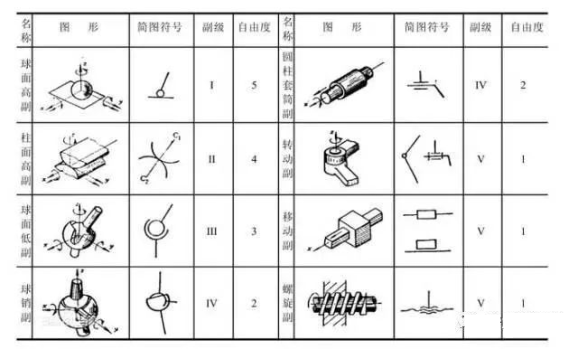






 Welcome to visit Steel Structure Person website, GangGouRen.com, a great tool for searching engineering articles
Welcome to visit Steel Structure Person website, GangGouRen.com, a great tool for searching engineering articles